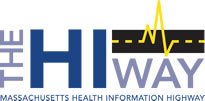In February 2017, EOHHS, the Massachusetts Executive Office of Health & Human Services, promulgated 101 CMR 20.00: Health Information Exchange, also known as the Mass HIway Regulations. These regulations implement key components of Chapter 118I of the Massachusetts General Laws, which pertain to the Mass HIway.
The regulations codify the HIway Connection Requirement, which requires certain healthcare organizations to connect to and use the HIway Direct Messaging System or another DirectTrust-accredited HISP to send Direct Messages. These organizations must implement increasingly rigorous clinical use cases by sending/receiving HIway Direct messages over a four-year cycle. For a summary of the regulations, click here.
The regulations also established a mechanism to allow patients to opt-in and opt-out of the Mass HIway, and provide HIway participants the option to distribute a fact sheet for patients.
The HIway Connection Requirement
The regulations stipulate that the HIway Connection Requirement is phased in by type of organization, and currently applies to the following Provider Organizations:
- Acute Care Hospitals
- Medium and Large Medical Ambulatory Practices
- Community Health Centers
The HIway Regulations align HIway Direct Messaging with other modes of transmission, e.g. fax or phone, and require these organizations to:
- Transmit health information via HIway Direct Messaging
- Comply with federal and state privacy laws and implementation regulations
- Meet specific HIE Use Case requirements when using the Mass HIway
If the HIway Regulations apply to your Provider Organization, you will need to connect to the HIway Direct Messaging System or another DirectTrust-accredited HISP to send Direct Messages.
Timeline for Provider Organizations to connect
The table below shows the year by which Provider Organizations must connect to the HIway Direct Messaging System or another DirectTrust-accredited HISP to send Direct Messages.
| Provider Organization | First Year of Requirement |
| Acute Care Hospitals | 2017 |
| Large and Medium Medical Ambulatory Practices | 2018 |
| Large Community Health Centers | |
| Small Community Health Centers | 2019 |
Four Year Phase-In Period
How provider organizations must fulfill the HIway Connection Requirement is phased in over 4 years:
- The connection requirement gets progressively stricter in each year of implementation
- Organizations that don’t meet the requirement may be subject to penalties starting in Year 4
- The 4 year phase-in period is based on when an organization must be connected
| Provider Organization | Year 1 | Year 4 |
| Acute Care Hospitals | 2017 | 2020 |
| Large and Medium Medical Ambulatory Practices | 2018 | 2021 |
| Large Community Health Centers | ||
| Small Community Health Centers | 2019 | 2022 |
Note: Provider types not yet specified in the regulations are anticipated to be required to connect at a future date.
○ Guidance to the affected providers will be provided with at least one year notice.
HIE Use Case Requirements
The table below lists the HIE Use Case categories allowed to be implemented to meet the Year 1 to Year 4 Requirements. Year 1 and 2 no longer apply to any providers. Providers in Year 3 and beyond need to implement a Provider-to-Provider Communications Use Case.
The use case examples listed in the table are for reference only, as other use cases may be suitable as well, provided these fit the categories allowed to satisfy the requirements. Note that the requirements are the minimum a provider must implement. To take advantage of the benefits of HIE, providers are encouraged to implement additional HIE use cases beyond the requirements.
The graphic below shows an example of a Provider-to-Provider Communications use case. You can use our HIE Use Case Toolkit to implement this use case or any other HIE Use Cases.
Statewide ENS Framework Requirement
There is an additional ENS Requirement that applies only to Acute Care Hospitals. These organizations must connect to the Statewide ENS Framework to submit Admission Discharge Transfer notifications (ADTs).
To learn more about the Statewide ENS Framework and this requirement for Acute Care Hospitals, click here.
Frequently Asked Questions
Mass HIway Regulations FAQs provide Questions & Answers related to the Mass HIway Regulations, and the attestation process. To access the FAQs, click here.



